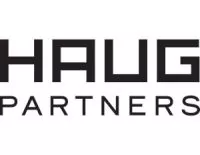In the event of potential infringement, an intellectual property attorney will generally consider sending a demand letter to put the potential infringer on notice of the infringement and request that the potential infringer cease and desist the alleged infringement. However, there are certain legal risks and strategic legal and business considerations that an attorney should bear in mind prior to sending a demand letter.
For example, the alleged infringer may seek to initiate a legal action by seeking a declaratory judgment of non-infringement, or begin to potentially challenge alleged intellectual property rights.
Additionally, intellectual property owners have to seriously consider the power of social media and the Internet and how these forums can be used to potentially harm the reputation of business holders. Unlike in the past, it is significantly easier for a potential infringer to publish a demand letter and have the letter go "viral." In some cases, trademark owners using overly aggressive language in their demand letters may risk stonewalling potential settlement or risk public shaming if the infringer posts the letter publically.
Despite these risks, a demand letter can be a useful tool to enforce the rights of the trademark holder, but it is essential that an attorney consider the associated risks with sending a letter and discuss the risks with the client.
Due Diligence and Pre-Investigation
Prior to sending a demand letter, an attorney should conduct a thorough due diligence to ensure that the client has prior rights to the mark and also to assess the strength of the client's trademark infringement claim. If the infringement claim is weak, a client may consider taking no action but continuing to monitor the potential infringer's use of the mark for potential future actions. If the client has a strong claim for infringement, an attorney may advise taking immediate legal action in lieu of a demand letter in order to stop the ongoing infringement. Failing to undertake this initial analysis may subject the client to unnecessary legal and business risks as discussed infra.
Business Considerations: Trademark "Bullying" and Social Media/Internet Shaming
The tone of a demand letter is important and can affect whether a potential infringer is willing to have negotiations with the trademark owner to resolve the potential infringement dispute. In the age of the Internet and social media, the possibility of a letter being made public is much greater than in the past, and the trademark holder can risk reputational harm if the letter is not drafted amicably. A trademark owner, particularly those that are corporations or businesses, may not want to risk being publicly embarrassed by an alleged infringer when its aggressive demand letter is published.
Some trademark owners when sending demand letters employ an aggressive and over-the-top approach, and this type of approach may hinder any type of amicable discussion between the trademark holder and potential infringers. The United States Patent and Trademark Office ("USPTO") in 2011 described such owners as trademark "bullies" and defined a trademark "bully" as "a trademark owner that uses its trademark rights to harass and intimidate another business beyond what the law might be reasonably interpreted to allow." Taking this kind of approach may also expose the trademark owner to reputational harm in the event the letter goes viral and further encourage what has become a more common practice of publicly "shaming" the trademark owner.
Alleged infringers, in the age of social media and the Internet, may choose to employ a strategy of publicly "shaming" trademark owners, which can be quite effective. For example, Chick-fil-A, the owner of the federally-registered trademark, EAT MORE CHIKIN, sent a demand letter to a self-described folk artist from Vermont who was the creator of t-shirts stating EAT MORE KALE. Muller-Moore, the owner of the EAT MORE KALE mark, would create these shirts and sell them at farmers markets and through his website. In October 2011, Chick-fil-A sent Muller-Moore a cease and desist letter demanding that he stop using the phrase EAT MORE KALE and surrender his website. In response, Muller-Moore turned to social media to defend his trademark rights to use EAT MORE KALE on Facebook and also started an online petition at change.org entitled "Chick-fil-A: Stop Bullying Small Business Owners" that has over 25,000 signatures. The governor of Vermont also held a press conference supporting Muller-Moore, and the story was picked up by the national media. This kind of campaign is an example of an effective "shaming" tactic used against a large corporation and can have an effect on a trademark dispute.
In contrast, Netflix recently employed a strategy to send a "softer" or more "friendly" demand letter in 2017 to a pop-up bar in Chicago, "The Upside Down," which was themed after one of Netflix's widely popular shows "Stranger Things." Netflix's letter, rather than utilizing legal jargon and citations to the Lanham Act, sent a friendly letter employing references to the show and requesting that the bar not extend beyond its 6-week run and reach out to Netflix for permission if the bar planned to do this again in the future. This letter resulted in positive press for both the bar and Netflix and is a strategy that may help both legally and from a business perspective in trying to enforce trademark rights with a smaller business.
The potential use of social media to attempt to publicly "shame" an overreaching trademark owner is a notable consideration when considering strategies to enforce a trademark. Taking the time to craft a thoughtful demand letter may increase the likelihood of an early amicable settlement and mitigate the risk of public "shaming" via the Internet or social media, which can have negative and wide-ranging consequences for a trademark dispute.
Potential Legal Risks
Declaratory Judgment of Non-Infringement
A potential legal risk of sending a demand letter is that a potential infringer may seek to file a declaratory judgment of non-infringement. In order to initiate such an action, there must be a justiciable controversy, which will generally be found to exist solely on the basis of a demand letter asserting claims for infringement. Demand letters that include threats of litigation, accusations of infringement, recitations of the legal requirements for infringement, and/or a refusal for the marks to co-exist may increase the risk that the trademark holder will be subject to a declaratory judgment action. To minimize the risk of a declaratory judgment, a trademark owner should avoid enforcement rhetoric, such as utilizing the terms "cease and desist," "infringement," or "lawsuit," and request that the party abandon all use of its trademark. Instead, a trademark owner should simply explain its trademark rights and request that the parties engage in discussions regarding the future use of their respective trademarks. Alternatively, a trademark owner may choose to forgo its ability to enforce its rights against the other party to avoid the risk of a declaratory judgment.
Undertaking a thorough due diligence and assessing the strength of the client's infringement claim can help to mitigate this risk. However, in the event a declaratory judgment action is initiated, it is important to advise the client of the costs associated with such a proceeding, which can be prohibitively expensive.
Potential Initiation of Cancellation Proceedings
A further legal risk of sending a demand letter is that the alleged infringer may choose to file a petition for cancellation of the registration with the USPTO if the mark is federally registered. Depending on the term of the mark and whether the trademark owner has filed a declaration of incontestability, the types of grounds that can be asserted to cancel the mark will vary. It is important for a client to be prepared to defend its mark in the event an alleged infringer does choose to invoke this strategy and initiate a cancellation proceeding.
Possible Effects on Pending Trademark Applications
An additional legal risk to consider for a trademark owner is the timing of the demand letter in relation to a pending application for federal registration. If an attorney is seeking to enforce a trademark that is not yet registered and is pending registration at the USPTO, it is important to consider whether the demand letter can hinder the registration of the mark. For example, if the trademark application is published and is in its period of opposition, the time period where third parties with standing can oppose registration of the mark on a number of grounds, then sending a demand letter may not be prudent. An alleged infringer would likely have standing to challenge the mark, and there is a risk that a demand letter will notify a third party recipient of the pending application and cause the third party to file an opposition, which can delay or prevent registration. Because of this risk, a party with a pending application should exercise caution in sending demand letter until the opposition period has ended and the application has entered the next stage of the registration process.
Conclusion
A demand letter can serve as an important tool to put a potential infringer on notice of alleged infringement and may be important if the trademark holder decides to pursue further legal action against an infringer. However, it is important to conduct thorough diligence of the mark to ensure that the trademark holder does have prior rights and to assess the strength of the client's trademark infringement claim. Furthermore, in addition to these considerations, the impact that such a letter can have if leaked via social media or the Internet on the reputation of the trademark holder is critical, and the tone an attorney uses in a letter can also have an impact on this potential risk. Taking these risks and strategic considerations into account can minimize the foregoing risks, and a demand letter can have beneficial purposes for the trademark owner, such as putting a potential infringer on notice, or facilitate licensing or co-existence discussions. For these reasons, it is important to perform a thorough due diligence prior to sending a demand letter and to decide which strategy will produce the most successful outcome for the client and mitigate risk.
The content of this article is intended to provide a general guide to the subject matter. Specialist advice should be sought about your specific circumstances.

